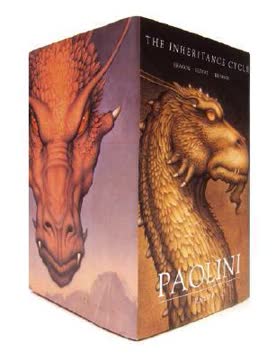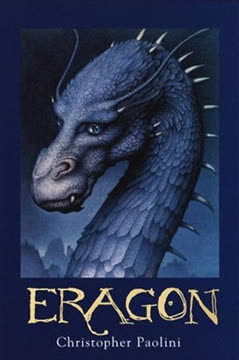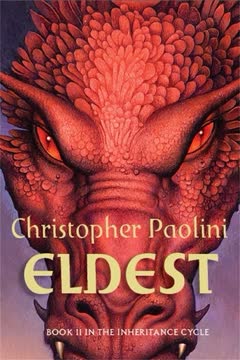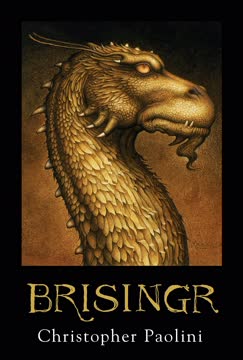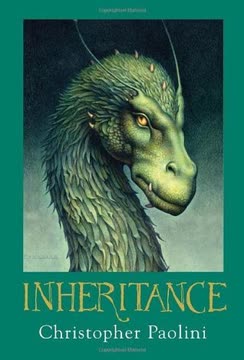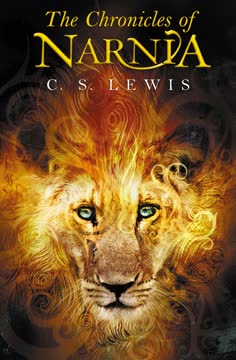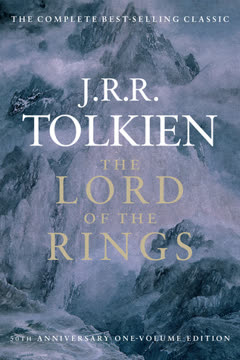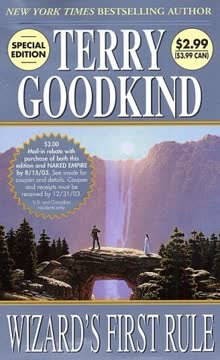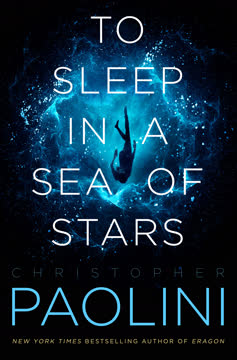Plot Summary
Shadows and Ambushes in the Forest
In the dark forest, a Shade and his Urgal minions lie in ambush, waiting for a group of elves carrying a mysterious object. The Shade, with his crimson hair and maroon eyes, is a formidable figure, wielding a thin, deadly sword. As the elves approach, the Shade's trap is sprung, leading to a fierce confrontation. The elves, realizing the danger, attempt to flee, but the Shade's magic and the Urgals' arrows bring them down. The Shade captures the elven lady, who carries a precious stone, and sets the forest ablaze to cover his tracks.
The Dragon's Awakening
With Saphira's presence, Eragon's life is irrevocably altered. He must keep her existence a secret to protect both her and his family. As Saphira grows, Eragon learns to care for her, building a shelter in the forest and hunting to feed her. The bond between them deepens, and Eragon begins to understand the responsibilities of being a Dragon Rider. However, the danger of discovery looms, and Eragon is torn between his new life and the safety of his family.
The Call to Adventure
The Ra'zac, servants of the evil King Galbatorix, attack Eragon's home, leaving his uncle Garrow mortally wounded. With Garrow's death, Eragon is consumed by grief and anger, vowing to avenge his uncle. Brom urges Eragon to leave the village and pursue the Ra'zac, warning him of the dangers ahead. Eragon accepts the call to adventure, setting out with Brom and Saphira on a journey that will change the fate of Alagaësia.
Secrets and Revelations Unveiled
Eragon demands answers from Brom about his mysterious past and their journey's true purpose. Brom reluctantly reveals his history as a former Dragon Rider and his connection to the Varden, a rebel group opposing the tyrannical King Galbatorix. He explains the significance of the dragon egg and the urgent need to protect it from falling into the wrong hands. This revelation deepens Eragon's understanding of the stakes involved and the legacy he has inherited. The conversation solidifies Eragon's resolve to fight against the Empire and protect Saphira, his dragon, at all costs.
The Path to the Varden
Eragon and his companions, including the elf Arya, embark on a treacherous journey to reach the Varden, a hidden group of rebels. The path is fraught with danger as they are pursued by Urgals, monstrous creatures allied with the Empire. Eragon's determination to protect Arya and deliver her to safety drives him forward, despite the overwhelming odds. The journey tests their endurance and resourcefulness, as they navigate through hostile terrain and evade their relentless pursuers.
Allies and Enemies in Tronjheim
Upon reaching Tronjheim, the stronghold of the Varden, Eragon is thrust into a world of political intrigue and shifting alliances. He must navigate the complex relationships between the Varden, the dwarves, and the elves, each with their own agendas and interests. Eragon's presence as a Dragon Rider is both a symbol of hope and a potential threat, as different factions vie for his allegiance. The chapter explores the theme of trust and the challenges of leadership in a divided world.
The Journey to Du Weldenvarden
With tensions in Tarnag unresolved, Eragon, Saphira, and their companions set out for Du Weldenvarden, the elven homeland. They travel by raft down the Az Ragni, then continue on foot and by donkey. The journey is fraught with challenges, including an encounter with Fanghur, dragon-like creatures that attack Saphira. Despite the dangers, Eragon is eager to reach the elves and continue his training, hoping to find answers to his many questions.
The Elves' Hidden World
Upon reaching Ellesméra, Eragon is awestruck by the beauty and harmony of the elven city. The elves have seamlessly integrated their homes into the natural landscape, creating a world that is both magical and serene. Eragon meets Queen Islanzadí and learns of Arya's royal lineage, which adds a new layer of complexity to their relationship. The elves welcome Eragon and Saphira, but the weight of their expectations is palpable. Eragon must prove himself worthy of their trust and guidance.
Roran's Desperate Decision
In Carvahall, Roran faces a difficult choice: stay and fight the Empire's forces or lead the villagers to safety. Driven by the need to protect his loved ones and avenge Katrina's capture, Roran decides to leave Carvahall and seek refuge with the Varden. He rallies the villagers with a passionate speech, convincing many to join him on the perilous journey. Roran's leadership and determination are tested as he prepares to abandon his home for the uncertain future that lies ahead.
The Varden's Dire Situation
Eragon and Saphira arrive at the Varden's camp, where they learn of the impending battle against Galbatorix's forces. The Varden are outnumbered and face a formidable enemy, but Eragon's presence brings hope. The chapter sets the stage for the upcoming conflict, emphasizing the themes of courage, sacrifice, and the fight for freedom.
A Desperate Battle Unfolds
The Varden are caught off guard by the soldiers' relentless assault. Despite their best efforts, the Varden suffer heavy casualties. King Orrin and his cavalry attempt to repel the attackers, but the soldiers' immunity to pain and death makes them nearly unstoppable. The Varden's morale is shaken, and they must regroup and find a strategy to overcome this new challenge. The battle highlights the dire situation and the need for new tactics.
Murtagh's Relentless Pursuit
Murtagh and his dragon, Thorn, ambush Eragon and Saphira, determined to capture them for Galbatorix. The aerial battle is fierce, with both sides sustaining injuries. Eragon tries to reason with Murtagh, offering a way to break free from Galbatorix's control, but Murtagh is torn between his loyalty and the hope of freedom. The fight ends in a stalemate, with Murtagh retreating but vowing to return. The encounter leaves Eragon questioning the limits of his power and the bonds of family.
A Wedding Amidst Chaos
Amidst the chaos of battle, Roran and Katrina decide to proceed with their wedding. The ceremony is a moment of joy and hope for the Varden, a reminder of what they are fighting for. Eragon officiates, bringing a sense of normalcy and celebration to the war-torn camp. The wedding strengthens the bonds between the villagers and the Varden, providing a brief respite from the ongoing conflict.
The Price of Vengeance
Eragon's long-standing quest for vengeance against the Ra'zac comes to a head as he confronts and defeats them. The victory is bittersweet, as it brings closure to his personal vendetta but also leaves him questioning the cost of his actions. The experience forces Eragon to confront the darker aspects of his nature and the consequences of his choices. The theme of vengeance and its impact on the soul is explored, highlighting the complexity of Eragon's character and his journey toward self-discovery.
Coronation of a New King
The dwarves gather in Tronjheim for the coronation of Orik as their new king. The ceremony is a grand affair, filled with tradition and reverence. Eragon and Saphira witness the event, reflecting on the significance of leadership and the responsibilities it entails. The coronation symbolizes a new era for the dwarves and strengthens the alliance between them and the Varden. Orik's ascension to the throne is a pivotal moment, marking a shift in the power dynamics of Alagaësia.
The Final March to Urû'baen
With new allies and a renewed sense of purpose, the Varden set their sights on Urû'baen, the heart of Galbatorix's empire. The journey is fraught with challenges, but the determination to overthrow the tyrant drives them forward. Eragon and Saphira lead the charge, their bond stronger than ever as they face the final confrontation. The march to Urû'baen represents the culmination of their journey and the hope for a brighter future for all of Alagaësia.
Characters
Eragon
Eragon is thrust into a leadership role, commanding Du Vrangr Gata and making strategic decisions for the Varden. He struggles with the weight of his responsibilities and the moral implications of his actions, particularly in his quest for vengeance against the Ra'zac. Eragon's journey is one of self-discovery and growth, as he learns to balance his personal desires with the needs of those he leads.
Saphira
Saphira remains a steadfast companion to Eragon, providing strength and guidance as they face new challenges. Her bond with Eragon is both a source of power and a vulnerability, as they must rely on each other to survive. Saphira's wisdom and courage are invaluable, and her presence is a constant reminder of the legacy they share as Dragon and Rider.
Brom
Brom is a former Dragon Rider who becomes Eragon's mentor, guiding him in the ways of magic and combat. His past is shrouded in mystery, but his knowledge and experience are crucial to Eragon's development. Brom's death is a turning point for Eragon, forcing him to confront the realities of his journey and the sacrifices required.
Roran
Roran's determination to protect the villagers of Carvahall and avenge Katrina's capture drives him forward. His leadership is tested as they face numerous challenges, showcasing his growth and resilience. Roran's character highlights the themes of loyalty, sacrifice, and the strength of the human spirit.
Arya
Arya's relationship with Eragon is marked by tension and unrequited love. Her dedication to her people and the fight against the Empire remains unwavering. Arya's character explores themes of duty, sacrifice, and the complexities of human emotions.
Nasuada
Nasuada faces the daunting task of leading the Varden against Galbatorix's forces. Her decision to ally with the Urgals showcases her strategic acumen and willingness to take risks for the greater good. Nasuada's character embodies the themes of leadership, courage, and the fight for freedom, as she navigates the complex political landscape of the Varden.
Murtagh
Murtagh is torn between his loyalty to Galbatorix and his desire for freedom. His encounters with Eragon reveal his inner struggle and the complexity of his character. Murtagh's relationship with Eragon is fraught with tension, as they are both allies and enemies.
Orik
Orik's coronation marks a significant turning point for the dwarves and their alliance with the Varden. As king, Orik must navigate the complexities of leadership and the expectations of his people. His relationship with Eragon is strengthened as they work together to defeat Galbatorix. Orik's character embodies the themes of loyalty, duty, and the importance of strong leadership.
Elva
Elva grapples with the burden of her abilities, which allow her to sense others' pain. Her decision to reject the compulsion to help others highlights her desire for independence and control over her own life. Elva's character adds depth to the story, exploring themes of free will and the consequences of magic.
King Galbatorix
King Galbatorix is the antagonist of the story, a former Dragon Rider who betrayed his order and seized control of the Empire. He seeks to capture Eragon and Saphira to consolidate his power and eliminate any threats to his rule. His influence looms over Eragon's journey, driving the conflict and shaping the world of Alagaësia.
Plot Devices
The Dragon Egg
The dragon egg is the central plot device that sets the story in motion. Its discovery by Eragon leads to the hatching of Saphira and the awakening of Eragon's powers as a Dragon Rider. The egg's origins and significance are shrouded in mystery, driving Eragon's quest for knowledge and understanding.
The Ancient Language
The ancient language is a key plot device that enables Eragon to access and control magic. It is the language of the elves and the foundation of the Riders' power. Mastery of the ancient language is essential for Eragon's growth as a Rider and his ability to face the challenges ahead.
The Gedwëy Ignasia
The gedwëy ignasia, or "shining palm," is the silver mark on Eragon's hand that signifies his bond with Saphira. It is a symbol of his status as a Dragon Rider and grants him access to magical abilities. The mark serves as a constant reminder of Eragon's responsibilities and the dangers he faces.
The Urgal Alliance
The alliance with the Urgals adds a new dimension to the Varden's forces, bringing unique skills and perspectives to the battle. The Urgals' decision to join the fight is driven by a desire for revenge and the opportunity to strike at Galbatorix's weakness. This unexpected partnership underscores the theme of unity and the importance of diverse allies in the struggle for freedom.
The Eldunarí
The Eldunarí, or heart of hearts, are the source of Galbatorix's immense power. By capturing and enslaving the Eldunarí, Galbatorix has gained control over the dragons' strength and wisdom. The revelation of the Eldunarí's existence provides a potential weakness for Eragon and the Varden to exploit in their quest to defeat the tyrant. The Eldunarí serve as a central plot device, driving the narrative and shaping the characters' actions.
Analysis
"Eragon, Eldest & Brisingr" by Christopher Paolini is a rich tapestry of adventure, magic, and the timeless struggle between good and evil. At its core, the series is a coming-of-age story, chronicling Eragon's transformation from a simple farm boy into a powerful Dragon Rider. The narrative explores themes of responsibility, leadership, and the moral complexities of power. Eragon's journey is marked by personal growth and self-discovery, as he learns to navigate the intricate politics of Alagaësia and the weight of his own legacy. The series also delves into the importance of unity and the strength found in diverse alliances, as the characters band together to fight against the oppressive rule of King Galbatorix. Through its vivid world-building and complex characters, the series offers a compelling exploration of the human spirit's resilience and the enduring power of hope and courage in the face of overwhelming odds.
Last updated:
FAQ
Synopsis & Basic Details
What is Eragon, Eldest & Brisingr about?
- Farm Boy's Unexpected Destiny: The story follows Eragon, a seemingly ordinary farm boy, whose life is irrevocably changed when he discovers a mysterious blue stone that hatches into Saphira, the last female dragon. This discovery thrusts him into the ancient order of the Dragon Riders, a lineage thought long extinct.
- Journey Against Tyranny: Guided by the enigmatic storyteller Brom, Eragon and Saphira embark on a perilous journey across Alagaësia. Their quest is initially one of personal vengeance against the Ra'zac, agents of the tyrannical King Galbatorix, but quickly evolves into a pivotal role in the rebellion led by the Varden.
- Growth, Magic, and War: Across three books, Eragon undergoes rigorous training in swordsmanship and magic, forging deep bonds with allies like the elf Arya and the dwarf Orik. He grapples with his identity, the moral complexities of war, and the shocking truth of his lineage, all while preparing for an inevitable confrontation with Galbatorix that will decide the fate of their world.
Why should I read Eragon, Eldest & Brisingr?
- Epic Fantasy Immersion: Readers should dive into Eragon, Eldest & Brisingr for a classic epic fantasy experience, rich with detailed world-building, ancient lore, and a compelling narrative arc. The series offers a deep dive into a world where magic is tangible, dragons are sentient partners, and the struggle between good and evil is fought on a grand scale.
- Character-Driven Evolution: The books excel in showcasing profound character development, particularly Eragon's transformation from an innocent farm boy to a conflicted, powerful Dragon Rider. His internal struggles with identity, morality, and the weight of destiny resonate deeply, offering a nuanced exploration of heroism.
- Intricate Political & Moral Themes: Beyond the adventure, the series delves into complex themes of leadership, the cost of war, the nature of justice, and the interplay between different races and cultures. It challenges readers to consider the grey areas of conflict and the personal sacrifices required for a greater cause, making it more than just a simple good-versus-evil tale.
What is the background of Eragon, Eldest & Brisingr?
- Alagaësia's War-Torn History: The narrative is set in Alagaësia, a land with a rich and violent history shaped by the rise and fall of the Dragon Riders. Centuries before Eragon's time, the Riders, who maintained peace between elves, dwarves, and humans, were betrayed and nearly annihilated by Galbatorix, a rogue Rider who crowned himself king and established a tyrannical Empire.
- Cultural and Geographical Diversity: Alagaësia is a diverse continent featuring the towering Spine mountains, the vast Hadarac Desert, the ancient elven forest Du Weldenvarden, and the subterranean dwarf cities like Tronjheim. Each region harbors unique cultures, languages (The Ancient Language, Dwarvish, Urgal), and magical traditions, all of which play a role in the unfolding conflict.
- Technological Stagnation & Magical Dominance: The world exists in a medieval-like technological state, with swords, bows, and rudimentary siege engines. However, magic is a pervasive and powerful force, wielded by Riders, elves, and some humans and dwarves. The story explores the rules and limitations of magic, its impact on society, and its central role in the power dynamics of Alagaësia.
What are the most memorable quotes in Eragon, Eldest & Brisingr?
- "The worth is in the act. Your worth halts when you surrender the will to change and experience life.": This quote from Saphira to Eragon after Garrow's death (Eragon, Chapter 14) encapsulates a core theme of the series: the importance of agency and action in the face of despair. It challenges Eragon to find purpose beyond grief, highlighting that true value lies in engagement with life, not passive acceptance of fate.
- "It is our destiny to attempt the impossible, to accomplish great deeds regardless of fear. It is our responsibility to the future.": Saphira's powerful declaration (Eragon, Chapter 14) defines the heroic ethos of the Dragon Riders. It speaks to the inherent duty of those with great power to confront overwhelming odds, emphasizing that their role is not merely to exist, but to actively shape the future of Alagaësia, inspiring Eragon to embrace his daunting path.
- "Those whom we love are often the most alien to us.": Oromis's profound observation to Eragon (Eldest, Chapter 24) delves into the complexities of relationships, particularly the unique bond between a Rider and their dragon, and Eragon's burgeoning feelings for Arya. It highlights that intimacy does not erase fundamental differences, but rather requires an acceptance of the other's distinct nature, a subtle insight into the emotional depth of the series.
What writing style, narrative choices, and literary techniques does Christopher Paolini use?
- Classic Hero's Journey Structure: Paolini employs a traditional hero's journey, meticulously detailing Eragon's call to adventure, refusal, meeting the mentor, trials, allies, enemies, and eventual transformation. This familiar structure provides a comforting framework for readers while allowing for complex character and plot developments.
- Detailed World-Building and Sensory Language: The author uses rich, descriptive language to immerse readers in Alagaësia. From the "silvery cloud drifted over the mountains" to the "fetid stench" of the Ra'zac, Paolini engages multiple senses, creating a vivid and believable world. This attention to detail extends to the unique cultures, languages, and histories of each race.
- Internal Monologue and Mental Communication: A significant narrative choice is the extensive use of internal monologue, particularly Eragon's thoughts and his mental communication with Saphira. This technique offers direct access to Eragon's evolving perspective, emotional turmoil, and moral deliberations, deepening reader empathy and providing insights into the unique Rider-dragon bond.
Hidden Details & Subtle Connections
What are some minor details that add significant meaning?
- Sloan's Wife's Death Foreshadows Spine's Danger: Sloan's intense aversion to the Spine, stemming from his wife Ismira's death at the Igualda Falls (Eragon, Chapter 3), initially seems like a personal quirk. However, it subtly foreshadows the Spine's inherent dangers and its connection to the wider magical world, hinting that Ismira's death might not have been a simple accident, but rather a consequence of the mountains' untamed nature or even early Ra'zac activity.
- Orik's Puzzle Ring as a Metaphor for Eragon's Growth: Orik gives Eragon a complex gold puzzle ring (Eldest, Chapter 27) to distract him from his pain. Eragon's eventual ability to solve it, after his transformation during the Agaetí Blödhren, symbolizes his increased mental acuity and mastery over his own fragmented identity. The ring, initially a mere distraction, becomes a tangible representation of his internal healing and intellectual development.
- The Menoa Tree's Sentience and Linnëa's Fate: The Menoa tree is revealed to be the transformed elf Linnëa (Eldest, Chapter 30), who sang herself into the tree after being betrayed in love. This detail not only explains the tree's immense power and sentience but also subtly connects to Eragon's own romantic struggles with Arya, hinting at the profound, sometimes destructive, consequences of love and betrayal in the elven world and foreshadowing potential sacrifices.
What are some subtle foreshadowing and callbacks?
- Brom's Ring and Arya's Tattoo: The symbol on Brom's sapphire ring, the yawë, is later revealed to be identical to Arya's tattoo (Eldest, Chapter 20). This subtle visual callback foreshadows Brom's deeper connection to the elves and Arya's royal lineage, hinting at a shared history and purpose that predates Eragon's involvement. It also subtly links Brom's past as a Rider to Arya's role as an elven ambassador.
- The Ra'zac's Fear of Water and Light: Early descriptions of the Ra'zac highlight their aversion to sunlight and their "moist" breath (Eragon, Chapter 16). This seemingly minor detail is a crucial foreshadowing of their weaknesses, later explicitly revealed by Oromis (Eldest, Chapter 32): they fear deep water and are pained by bright light. This early hint allows astute readers to piece together their vulnerabilities before the full revelation.
- Blagden's Riddles and Eragon's Parentage: Blagden the raven's cryptic riddles, particularly "While two may share two, / And one of two is certainly one, / One might be two" (Brisingr, Chapter 40), subtly foreshadow Eragon's complex parentage. The riddle hints at the shared mother (Selena) between Eragon and Murtagh, and the two fathers (Morzan and Brom), a truth that is only fully unveiled much later, adding layers of mystery to Eragon's identity.
What are some unexpected character connections?
- Angela's Apprenticeship to Tenga: The revelation that Angela the herbalist was once an apprentice to Tenga, the eccentric hermit-scholar (Brisingr, Chapter 44), is an unexpected connection that deepens both characters. It explains Angela's vast, eclectic knowledge and her unique approach to magic, while also hinting at Tenga's profound, if unconventional, wisdom. This link suggests a hidden network of powerful, independent figures operating outside the main conflict.
- Orik's Adoption into Hrothgar's Family: Orik's status as Hrothgar's adopted heir (Eldest, Chapter 25) is a crucial, yet initially understated, connection. It explains Orik's deep loyalty to the king and his eventual ascension to the throne, while also highlighting the dwarf tradition of choosing leaders based on merit and familial bonds. This connection solidifies Orik's importance beyond being merely Eragon's guide.
- Nasuada's Ancestry and the Wandering Tribes: Nasuada's heritage from the wandering tribes (Brisingr, Chapter 47), revealed during her confrontation with Fadawar, is an unexpected link that explains her dark skin and her deep understanding of tribal customs. This connection provides a nuanced background for her leadership style and her ability to navigate complex political landscapes, showing her roots extend beyond the Varden's immediate history.
Who are the most significant supporting characters?
- Angela the Herbalist: Angela is a pivotal supporting character, whose eccentric wisdom and powerful, unconventional magic often provide crucial aid and cryptic prophecies. Her deep knowledge of Alagaësia's hidden lore, her ability to speak with werecats, and her unexpected connections (like her past with Tenga) make her an invaluable, if unpredictable, ally. Her role often transcends that of a mere healer, acting as a moral compass and a source of profound insight.
- Oromis the Mourning Sage: Oromis, Eragon's elven mentor, is significant not only for his extensive knowledge of magic and Rider lore but also for his personal history as a crippled Rider. His wisdom, patience, and philosophical approach to training profoundly shape Eragon's understanding of power, morality, and the true nature of magic. His hidden existence and eventual re-emergence are critical to the Varden's strategy.
- Jeod Longshanks: Jeod, Brom's old friend and a merchant in Teirm, plays a vital role in providing intelligence and logistical support to Eragon and later to Roran. His resourcefulness, loyalty to the Varden, and willingness to sacrifice his own comfort for the cause highlight the importance of ordinary people in the rebellion. His detailed knowledge of the Empire's trade routes and his ability to decipher hidden information are crucial plot drivers.
Psychological, Emotional, & Relational Analysis
What are some unspoken motivations of the characters?
- Brom's Paternal Guilt and Redemption: Beyond his stated mission to train Eragon, Brom's unspoken motivation is a deep-seated paternal guilt and a desire for redemption. His confession that he is Eragon's father (Brisingr, Chapter 50) reveals that his entire journey with Eragon is an attempt to atone for his past failures, particularly his inability to protect Selena and his role in the Riders' downfall. He seeks to guide Eragon to a better fate than his own, driven by a love he could not openly express.
- Arya's Suppressed Grief and Duty: Arya's stoic demeanor and dedication to duty mask a profound, unspoken grief over the loss of her companions, Fäolin and Glenwing, and the trauma of her torture by Durza (Eldest, Chapter 20). Her reluctance to form close bonds, particularly with Eragon, stems from a fear of further loss and a deep-seated belief that her personal happiness must be sacrificed for the greater good of her people. Her commitment to the yawë (bond of trust) is a coping mechanism for her emotional wounds.
- Murtagh's Search for Identity and Acceptance: Murtagh's complex motivations, especially his initial reluctance to join the Varden and his later service to Galbatorix, are driven by an unspoken yearning for acceptance and a struggle against his father's legacy. His defiance of Galbatorix's orders to kill Eragon (Eldest, Chapter 38) and his later attempts to reason with Eragon reveal a deep desire to prove his own worth and escape the shadow of Morzan, even while bound by unbreakable oaths.
What psychological complexities do the characters exhibit?
- Eragon's Moral Evolution and Burden of Power: Eragon grapples with the psychological complexity of wielding immense power and the moral compromises it demands. His initial revulsion at killing (Eragon, Chapter 18) and his later struggle with the "Obliterator" (Eldest, Chapter 33) demonstrate his internal conflict between his innate compassion and the brutal necessities of war. His decision to spare Sloan (Brisingr, Chapter 45) and his subsequent guilt over Elva's curse highlight his evolving moral compass and the heavy psychological toll of his responsibilities.
- Nasuada's Calculated Vulnerability and Leadership: Nasuada exhibits a complex psychological profile, balancing fierce determination with calculated vulnerability. Her willingness to endure the Trial of the Long Knives (Brisingr, Chapter 47) and her open admission of fear to Eragon (Brisingr, Chapter 54) are strategic choices designed to inspire loyalty and unity. This blend of strength and perceived weakness allows her to command respect from diverse factions, showcasing a sophisticated understanding of human psychology in leadership.
- Sloan's Obsessive Love and Self-Destruction: Sloan's character is a study in psychological complexity, driven by an obsessive, almost pathological, love for his daughter, Katrina. This love fuels his betrayal of Carvahall and his descent into villainy, yet it also provides a twisted justification for his actions (Brisingr, Chapter 45). His self-inflicted blindness and eventual banishment to Ellesméra reveal a man consumed by grief and pride, unable to reconcile his actions with his self-image, leading to a tragic, self-destructive path.
What are the major emotional turning points?
- Garrow's Death and Eragon's Vengeance: The brutal murder of Garrow by the Ra'zac (Eragon, Chapter 13) is a major emotional turning point for Eragon. It shatters his innocent farm life and ignites a fierce, consuming desire for vengeance, propelling him into his destiny as a Dragon Rider. This event transforms his journey from one of discovery to one of retribution, shaping his early actions and motivations.
- Murtagh's Revelation of Shared Parentage: Murtagh's confession that he and Eragon share the same mother, Selena, and that Morzan is their father (Eldest, Chapter 38), is a devastating emotional turning point. It shatters Eragon's sense of identity, forcing him to confront a lineage he despises and creating a profound internal conflict. This revelation deeply impacts his relationship with Murtagh and his understanding of his own place in the world.
- Orik's Coronation and Saphira's Healing of Isidar Mithrim: Orik's ascension to King of the Dwarves (Brisingr, Chapter 49) and Saphira's subsequent healing of the shattered Isidar Mithrim (Brisingr, Chapter 49) mark a significant emotional turning point for the dwarves and the Varden. It restores hope and pride to the dwarf race, solidifying their alliance and demonstrating the profound impact of Saphira's magic beyond mere combat. For Saphira, it's a moment of profound connection and purpose.
How do relationship dynamics evolve?
- Eragon and Saphira: From Master/Pet to Equal Partners: Their relationship evolves from Eragon's initial perception of Saphira as a "dangerous animal" (Eragon, Chapter 6) to a deep, telepathic bond of equal partnership. Saphira's growth in intelligence and her ability to communicate complex thoughts (Eragon, Chapter 9) transform their dynamic, culminating in their merged consciousness during battle (Eldest, Chapter 37) and their shared emotional burdens, demonstrating a profound, symbiotic connection.
- Eragon and Brom: From Mentor/Student to Father/Son: The relationship between Eragon and Brom deepens from a traditional mentor-student dynamic to an unspoken father-son bond. Brom's initial secrecy and gruff instruction (Eragon, Chapter 7) gradually give way to genuine affection and protection, culminating in his sacrifice for Eragon (Eragon, Chapter 17). The posthumous revelation of their true familial connection (Brisingr, Chapter 50) recontextualizes their entire journey, highlighting Brom's profound love and sacrifice.
- Roran and Katrina: Love Forged in Adversity: Roran and Katrina's relationship transforms from a budding romance into an unbreakable bond forged through extreme adversity. Sloan's opposition and Katrina's kidnapping (Eldest, Chapter 29) force Roran to undertake extraordinary feats of courage and leadership. Their eventual marriage (Brisingr, Chapter 55) symbolizes enduring love and hope amidst chaos, demonstrating how shared hardship can strengthen commitment.
Interpretation & Debate
Which parts of the story remain ambiguous or open-ended?
- The Menoa Tree's Unfulfilled Request: The Menoa tree grants Eragon brightsteel but asks for something in return, which Eragon promises to give (Brisingr, Chapter 30). However, the nature of this request is never explicitly revealed, leaving it an open-ended debt. This ambiguity suggests a future consequence or a deeper, unrevealed connection between Eragon and the ancient forest, hinting at a potential future sacrifice or obligation.
- Tenga's Ultimate Quest: The hermit Tenga's "search for the answer" (Brisingr, Chapter 35) remains largely ambiguous. While he hints at profound philosophical and magical inquiries, the specific nature of his ultimate goal and whether he ever achieves it is left unresolved. This open-ended element adds to the mystique of magic and knowledge in Alagaësia, suggesting that some truths are beyond human comprehension or definitive discovery.
- The Fate of The Eldunarí within Galbatorix: While Glaedr reveals the existence of The Eldunarí and their role in Galbatorix's power (Brisingr, Chapter 51), the exact method for freeing them from his control remains an open question. This crucial ambiguity sets up the central challenge for the final book, leaving readers to speculate on how Eragon and the Varden might achieve this seemingly impossible feat and what the consequences of such an act would be.
What are some debatable, controversial scenes or moments in Eragon, Eldest & Brisingr?
- Eragon's Blessing of Elva: Eragon's accidental curse-like blessing of Elva (Eldest, Chapter 26), which forces her to feel others' pain and mature unnaturally fast, is a controversial moment. Readers debate the morality of Eragon's actions, even if unintentional, and the ethics of manipulating a child's destiny. It raises questions about the unforeseen consequences of magic and the burden of power, challenging the notion of a purely benevolent hero.
- Murtagh's Forced Loyalty to Galbatorix: Murtagh's claim that he and Thorn are bound by unbreakable oaths to Galbatorix (Eldest, Chapter 38) sparks debate about free will versus fate. While Eragon believes Murtagh is a victim, some readers may question the extent of his compulsion, especially given his seemingly willing participation in Hrothgar's death. This ambiguity forces readers to grapple with the nature of evil and whether individuals can truly be absolved of actions committed under duress.
- Nasuada's Alliance with the Urgals: Nasuada's decision to ally the Varden with the Urgals (Brisingr, Chapter 54), despite their history of atrocities, is highly controversial. Many characters, including Eragon and Jörmundur, vehemently oppose it. This moment forces readers to confront the moral compromises necessary in war and whether the ends justify the means, highlighting the pragmatic and often brutal realities of leadership in a desperate conflict.
Eragon, Eldest & Brisingr Ending Explained: How It Ends & What It Means
- Eragon's Transformation and Acceptance of Identity: The ending of Brisingr sees Eragon fully transformed into an elf-like being, physically and magically enhanced by the Agaetí Blödhren (Brisingr, Chapter 39). He accepts Brom as his father (Brisingr, Chapter 50) and embraces his role as a Dragon Rider, shedding the last vestiges of his farm boy identity. This signifies his readiness to confront Galbatorix, having reconciled his past and understood his true
Review Summary
Eragon, Eldest & Brisingr receive high praise from readers for their engaging fantasy world, well-developed characters, and captivating storyline. Many compare it favorably to other popular series like Harry Potter and Lord of the Rings. Readers appreciate the magic system, dragon lore, and character growth throughout the trilogy. Some criticize pacing issues and shortcuts in character development. Overall, the series is beloved by many for its immersive world-building and epic adventure, inspiring a love of reading in young adults and leaving fans eagerly anticipating the next installment.
The Inheritance Cycle Series
Similar Books
Download PDF
Download EPUB
.epub digital book format is ideal for reading ebooks on phones, tablets, and e-readers.
